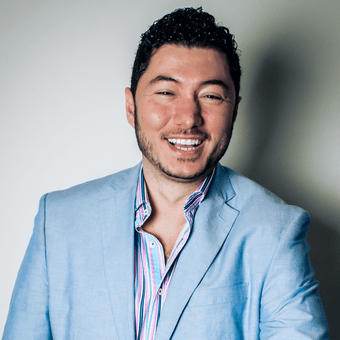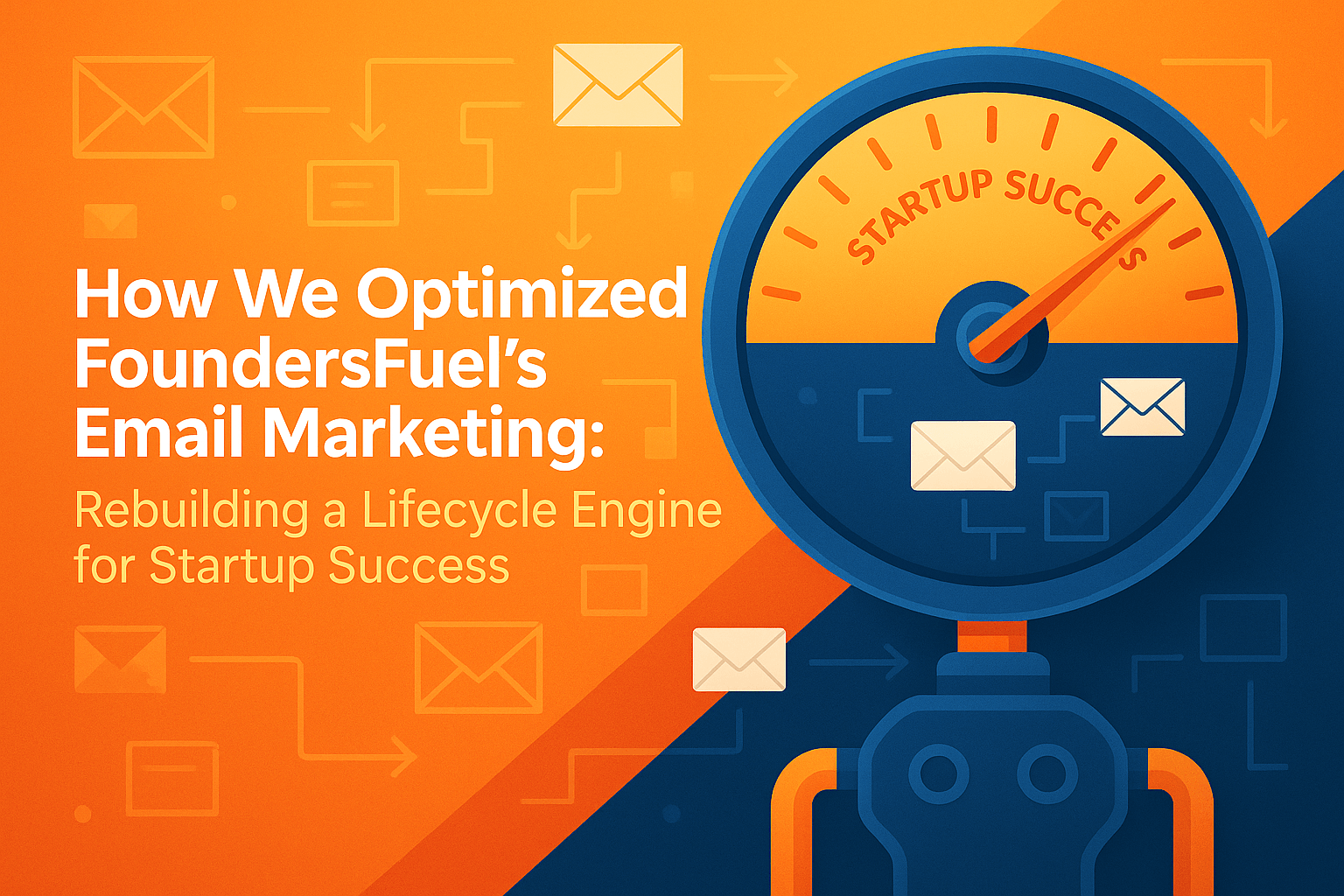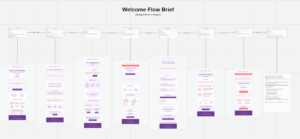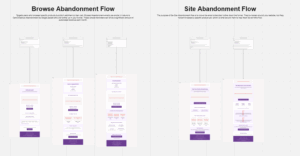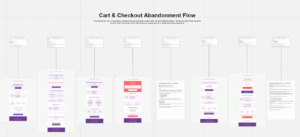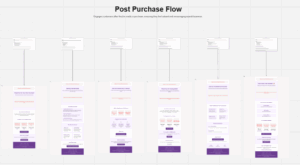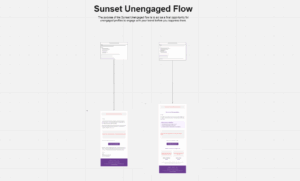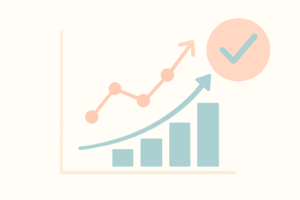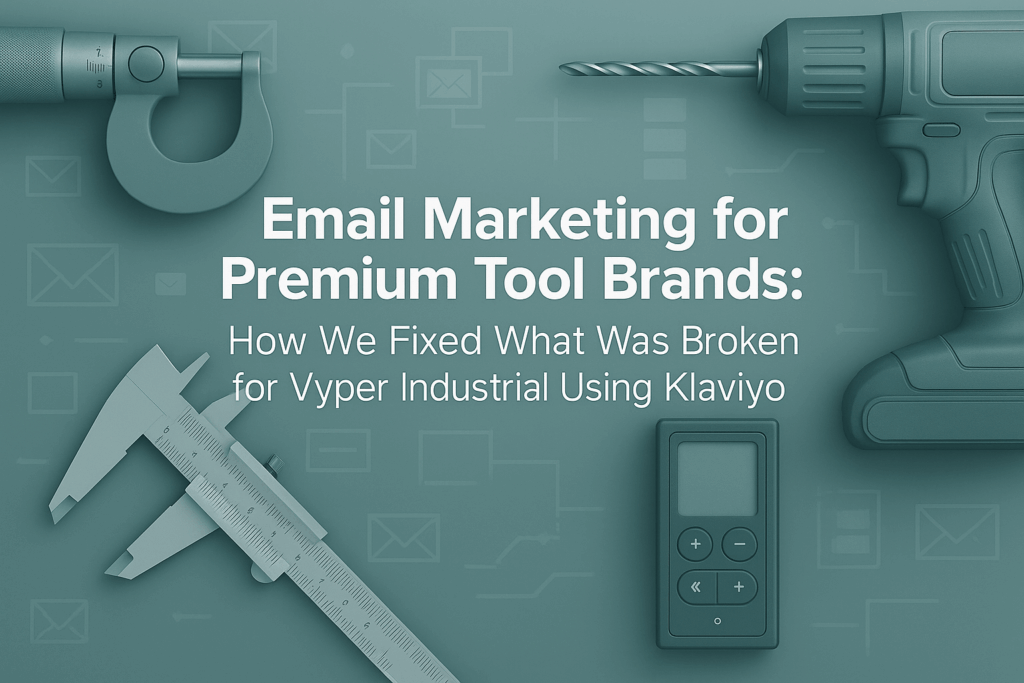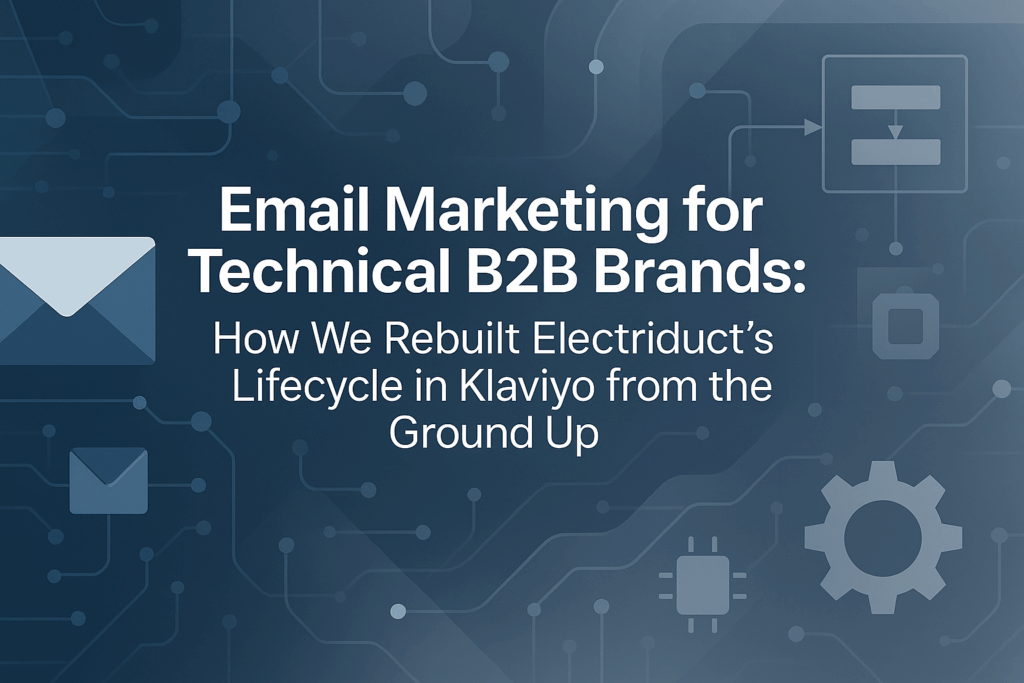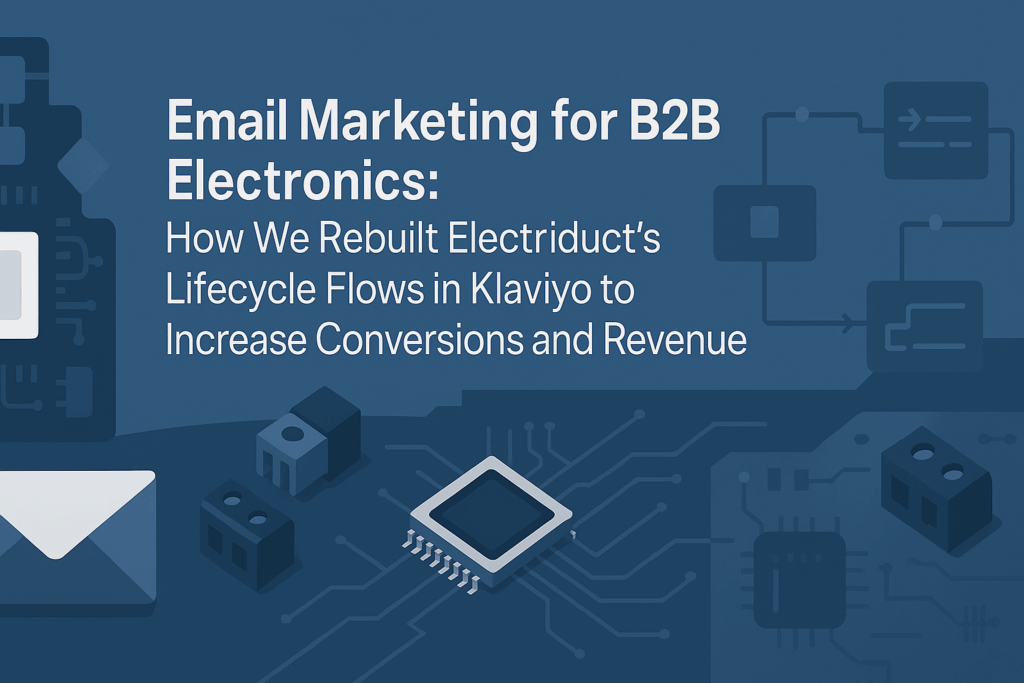At FoundersFuel, performance isn’t a buzzword—it’s a baseline. From their startup accelerator to their high-energy community events, everything they do is designed to help founders thrive at peak intensity. So when they asked us to rebuild their email marketing strategy, we didn’t just tweak a few subject lines. We engineered a communication system as relentless, intelligent, and adaptive as the entrepreneurs they serve.
Since 2011, FoundersFuel has grown from a tight-knit accelerator in Montreal to a full-blown founder ecosystem. They now power early-stage companies with seed funding, mentorship, thought leadership content, and an evolving line of branded products—including community-driven merch and custom-formulated energy drinks for high-output minds.
But their email marketing? It wasn’t carrying its weight. The brand felt fragmented. Different subscriber types were receiving the same bland content, often out of sequence, and rarely personalized. Applicants to the accelerator received the same messaging as customers buying a hoodie or trying an energy drink. The system had potential, but it wasn’t functioning as a relationship engine.
Our goal wasn’t to just improve open rates—it was to design a scalable lifecycle strategy that reflected FoundersFuel’s mission. We needed to respect the different paths people took into the ecosystem—whether they joined through content, commerce, or community—and tailor each experience accordingly.
Here’s how we built an email ecosystem that doesn’t just market. It mentors.
Welcome Flow Optimization: First Impressions Built to Endure
When someone joins the FoundersFuel ecosystem, they’re not just subscribing to a mailing list—they’re stepping into a founder-first community. But the original welcome flow didn’t treat it that way. It delivered three generic emails with minimal segmentation, little storytelling, and no connection to the specific needs of the person receiving it. It felt more like a checkbox than an experience.
We rebuilt the entire welcome sequence from scratch, expanding it into a segmented, 8-email onboarding series that adapts to each subscriber based on how they entered the ecosystem: whether they applied to the accelerator, purchased merchandise, bought an energy drink, or signed up for startup content.
1. The Power Introduction
The first touchpoint had one job: deliver immediate value and show that FoundersFuel was built by founders, for founders. Each version of this email was tailored to the signup context. Accelerator applicants received a confirmation and insight into what to expect. Product buyers were welcomed into the community with an exclusive discount. Newsletter subscribers got a preview of the kind of founder-first insight they could expect. All paths featured a direct, personal message from the FoundersFuel team—and an unmistakable tone: smart, bold, and human.
2. The Origin Story
This was where we brought the mission to life. We told the story of FoundersFuel’s humble beginnings in Montreal, highlighting how they grew from a grassroots mentorship project into a nationally respected startup launchpad. It wasn’t a laundry list of achievements. It was a founder journey—the kind their subscribers could see themselves in.
3. Value by Audience
This is where personalization kicked in. Each segment received messaging specific to their interests. Applicants got a behind-the-scenes look at the 4-month accelerator. Shoppers saw the community impact behind the merch. Energy drink customers learned about the founder-formulated ingredients. Everyone got a deeper sense of why their path into the brand mattered.
4. Social Proof That Matters
Startup founders don’t trust fluff. They trust results. This email showed them that FoundersFuel doesn’t just talk the talk. We surfaced testimonials from accelerator alumni who raised capital, product reviews from customers who felt the energy, and candid photos of real community moments—from demo days to backyard meetups.
5. Product & Program Deep Dive
If the subscriber came in through a specific entry point, now was the time to zoom in. Applicants got a walkthrough of mentorship tracks and funding stats. Buyers got guidance on sizing, materials, or how the energy drinks were formulated for performance. Each email carried the tone of “we built this for you.”
6. Community Invitation
No matter where someone came from, FoundersFuel wanted them to stay plugged in. This email extended the invite to community forums, founder circles, and live events. The CTA wasn’t “buy more.” It was “join more.” Because in the world of startups, connection beats consumption every time.
7. Handling Hesitation
This message was all about removing friction. For program applicants, we clarified timelines and selection criteria. For product buyers, we addressed returns, shipping, and what to do if the energy drink wasn’t the right fit. We brought support into the flow before it was needed—so it never became a reason to drop off.
8. The Final Push
This wasn’t a hard sell—it was a smart nudge. Depending on the segment, we used deadline urgency (accelerator applications), special offers (merchandise), or timely content drops (newsletter). Each version ended with a personal note and a reminder: this isn’t a brand—it’s a launchpad.
Why This Flow Works
The magic of this welcome flow isn’t just in the number of emails—it’s in the way each one builds trust, deepens relevance, and respects the journey of the subscriber. Whether you’re a first-time shopper or a founder about to pitch to VCs, you feel like FoundersFuel gets you. Because it does.
It works because:
- It speaks directly to why someone signed up, not just that they signed up.
- It builds progressive familiarity with the brand, rather than front-loading information.
- It creates micro-moments of value—education, inspiration, community—at every step.
- It establishes the tone and experience that FoundersFuel promises across every part of its business.
This isn’t onboarding. It’s founder alignment at inbox scale.
Abandonment Flows Optimization: Picking Up the Conversation—Not the Pressure
People don’t browse aimlessly. If they’re on your site, poking around your accelerator program, checking out the startup-themed energy drinks, or scrolling through merch, it means something sparked their curiosity. But life moves fast. Sometimes they get distracted. Sometimes they hesitate. That doesn’t mean the moment’s gone—it means the moment paused.
For FoundersFuel, abandonment wasn’t a signal to chase people down. It was a chance to gently restart the conversation with purpose, patience, and relevance. So we built two flow types to do just that.
One for those who wandered through the site without diving deeper—Site Abandonment. And one for those who explored something specific—product pages, content articles, or program details—but didn’t move forward. That was our Browse Abandonment flow.
Each one treated hesitation as human. No FOMO gimmicks. No desperate countdowns. Just thoughtful re-engagement that says, “Hey, you were here. That matters.”
Site Abandonment Flow (2 Emails)
Sometimes people land on your homepage, scroll a bit, click nothing, and leave. But that doesn’t mean they’re not interested. They’re feeling things out. So instead of bombarding them with a sales pitch, we sent two emails that re-opened the door.
1. “Fuel for Your Journey”
Sent a day after they visited, but didn’t click around, this first message didn’t pretend to know what they wanted. It simply said, “Here’s a little more about what we do—take what resonates.”
We walked them through the FoundersFuel world: the accelerator program changing startup trajectories, the newsletter full of no-fluff insights, the founder-designed energy blends built for long nights, the merch that feels like insider gear. We weren’t asking for anything. We were just showing what’s possible.
The tone was laid-back but intentional—like a friend saying, “I think you’d like this.”
2. “What Are You Building?”
Seventy-two hours later, we got a little more personal. This message centered around one big question: What are you working on?
Because if they found themselves on our site, it’s probably not by accident. We leaned into founder psychology: a dream half-shaped, a project waiting for clarity, a business plan still stuck in their notes app.
We shared stories from other builders. We linked to our most popular resources. And we reminded them they weren’t alone. The CTA? “Explore when you’re ready.” That’s it.
Why This Flow Works
Because it doesn’t assume intent—it respects it. These emails weren’t about pushing someone to act. They were about reminding someone why they clicked in the first place. By staying soft, clear, and curiosity-driven, we left space for the right moment to arrive—on their terms.
Browse Abandonment Flow (3 Emails)
Now let’s talk about visitors who got specific. They clicked into the accelerator program overview. They checked out the mint green “Build Mode” hoodie. They spent five minutes reading about the focus-enhancing ingredients in the energy drink. These are high-intent actions, and we treated them like invitations to continue a real conversation.
1. “Still Thinking About It?”
This email went out four hours after their visit, not to pressure, but to reconnect.
We pulled in the exact item or page they’d been looking at, and wrapped it in context. What makes this hoodie special? Why our energy drinks don’t just caffeinate—they focus. How our accelerator program changed the game for 100+ founders. We kept it friendly. Familiar. Almost like picking up mid-thought.
It felt like, “Hey, you left off here. Want to keep going?”
2. “Got Questions?”
A day later, we followed up with answers before they even had to ask.
Whether it was “What’s in this drink?” or “What kind of mentorship is included in the accelerator?”—we proactively addressed the doubts that cause browsers to pause.
No walls of text. Just clean, helpful detail backed by real stories. One testimonial from a founder. One quote from an energy customer. One subtle reminder that this decision might be the next step they’re looking for.
We didn’t assume they were unsure. We showed them they were understood.
3. “Before It Slips Away”
Two days later, we wrapped the flow with a soft nudge. A reminder, not a plea.
We resurfaced what they viewed, added a gentle prompt (early deadline for the next program, limited inventory on the merch, free shipping still active), and left them with the same tone that defined the entire sequence: “When you’re ready, we’re here.”
Nothing about it screamed urgency. But everything about it respected momentum.
Why This Flow Works
Because it talks like a human. We didn’t automate pressure—we automated empathy. We followed behavior with relevance. We earned attention by caring about why it existed in the first place. And by the time that third email landed, the user didn’t feel sold to—they felt seen.
Cart & Checkout Flow Optimization: Earning Back the Edge of Commitment
When someone adds something to their cart and walks away, it’s not always about price. It’s a moment. Maybe they got interrupted. Maybe they hesitated. Maybe they just needed a second to think. And for a brand like FoundersFuel—built by and for founders—those moments carry weight.
You don’t earn a founder’s trust by yelling louder. You earn it by staying calm when they go quiet. That’s exactly what this cart recovery flow was designed to do: meet people at the edge of decision with empathy, clarity, and timing that feels right.
We didn’t flood inboxes with discount codes. We rebuilt confidence, one carefully written email at a time.
1. “Still Thinking About It?”
This first message goes out just a few hours after the cart is left behind—but it doesn’t try to “win” them back. That’s not the tone. Instead, it feels like a polite shoulder tap. We remind them what they picked, not with urgency, but with recognition. “You had your eye on this. Still feel the same?” It’s clean, visual, and personal. No pressure. Just presence.
2. “Have Questions?”
A full day later, if they haven’t come back, we assume the stall wasn’t disinterest—it was uncertainty. This email steps in with a steady hand. No jargon, no overwhelming bullet lists. Just: “Here’s what you might be wondering—and here’s what to know.” Shipping. Returns. Product details. A direct link to support if they want to talk to someone. It’s not a push—it’s permission to slow down and feel safe.
3. “Here’s Why It Matters”
Now, it’s about the story. Not our story—yours. We remind them why this product or purchase made sense in the first place. Was it a hoodie with a purpose? A drink formulated to keep you sharp without the crash? We talk about what it means to the team that made it and the community that uses it. Because sometimes belief needs a nudge, not a promo.
4. “A Small Gift to Keep Things Easy”
If they’re still holding back, we make the path smoother, not cheaper. This email introduces free shipping, but not like a loud banner. It reads more like, “Hey, if this helps you decide, it’s on us.” There’s a timer, sure, but even that feels soft. No red flashing countdowns. Just a way to make the decision easier if they were almost there.
5. “Where This Came From”
At this point, we slow it down. This email isn’t transactional—it’s behind-the-scenes. A founder story. Why did we make this? The late nights, the prototypes, the beta tests. We take them into the room where it happened. Not to sell, but to connect.
6. “People Like You, Loving It”
Social proof doesn’t have to be loud. This email is just a collection of stories from customers who made the same leap. Photos. Quick quotes. Not the glossy, overproduced stuff—real feedback from real people. That subtle kind of reassurance: “You’re not alone in liking this.”
7. “Cart’s Almost Gone”
After a week, we get direct—but we don’t get desperate. This email is honest. “You left something behind. If it’s still on your mind, now’s the time. If not, that’s okay too.” We give them a clear, respectful reminder of the benefits, a sharp CTA, and then step aside.
8. “A Quick Note From the Founder”
Last touch. Plain text. No design. No clever subject lines. Just a real note from the founder saying, “Thanks for checking us out. If this wasn’t right, that’s okay. But if there’s anything we can do better—or if you want to talk—I’d love to hear from you.” It leaves the door open. That’s it.
Why This Flow Worked
Because it didn’t try to sell. It tried to understand. And in doing that, it rebuilt the bridge between curiosity and action. Each email earned its place. Each message respected the reader. That’s what good email marketing does—it doesn’t push. It reminds you why you cared in the first place.
Customer Retention Flows Optimization: Building Lifetime Value
When someone buys from you, the story shouldn’t end at checkout—it should just be getting started. For FoundersFuel, retention wasn’t just about getting another sale. It was about proving that the trust someone placed in the brand was worth it.
And with a brand like this, where every product is tied to performance, identity, or community, you don’t just follow up with order numbers and shipping alerts. You build a rhythm. A journey. Something that turns a simple transaction into a long-term connection.
So we built out a retention engine with one goal in mind: to keep people coming back not because they were targeted, but because they felt seen.
Post-Purchase Flow: A New Kind of Onboarding (6 Emails)
Every order from FoundersFuel drops into someone’s life with meaning. Maybe it’s a hoodie that becomes their startup uniform. Or an energy drink that fuels a 14-hour pitch prep. Or just a first touchpoint with the kind of founder-first ecosystem they’ve been looking for.
This flow picked up where checkout left off—and turned fulfillment into foundation.
1. “You’re In—Here’s What’s Next”
Right after they hit buy, we greeted them like a new team member, not a number. We gave them the practicals: confirmation, tracking, and estimated delivery. But more importantly, we told them they’d just stepped into a larger community. It wasn’t a transactional email. It was a welcome letter with energy.
2. “On Its Way—Read This Before It Lands”
When the package shipped, we didn’t just send a link and dip. We showed up with care: “Here’s how to get the most out of your first order.” Maybe it was a cold brew pairing tip for their energy stack. Maybe it was the playlist that kept our founders going. Either way, it felt like advice from a mentor, not a brand.
3. “How’s It Working For You?”
Three days after it landed, we checked in. Not with a review ask, but a real question: “Is it helping?” We offered setup tips, little hacks, and stories from others using the same product in the trenches. The vibe was, “We’re still here. How can we help you get more out of this?”
4. “Show Us What You’ve Built”
A week in, we opened the floor. “Got a photo? A thought? A reaction?” We didn’t frame it as a marketing ask. We framed it as a contribution. We wanted their story to be part of our story—because FoundersFuel isn’t just a brand, it’s a mirror for the people who power it.
5. “Add to Your Stack”
By day 14, we assumed they’d found value. So we curated more, not to sell more, but to elevate their setup. We shared bundles, complementary pieces, and how other community members were combining products to fit their daily grind. It felt personal, relevant, and peer-recommended—not algorithmic.
6. “Let’s Keep This Going”
Three weeks in, we brought the curtain up on the full FoundersFuel experience. Not just products, but people. Events. Virtual meetups. Founder stories. We said, “If you’ve been vibing with the energy, here’s where it lives 24/7.” The door didn’t just stay open—it widened.
Why This Flow Worked
Because it didn’t feel like a “flow.” It felt like a conversation. One that paced itself just right. One that delivered value before asking for anything. And one that gave the customer a chance to speak back.
The post-purchase experience became less about nudging and more about nurturing. And that’s where real retention starts—when people feel like they joined something they actually want to stay in.
Winback Flow Optimization: Reigniting Dormant Relationships
When customers go quiet, most brands panic or push harder. FoundersFuel didn’t. We treated those 60–90 day lapses not as failures, but as moments to reconnect with care, not pressure. This flow was about reigniting a spark—not with urgency, but with relevance, updates, and an honest invitation to rejoin a fast-moving, founder-focused world.
1. A Warm, Personalized Re-Introduction
We opened gently, with familiarity and context. This wasn’t a generic “come back” plea—it referenced what they’d bought or interacted with before and paired that with news they’d likely care about: a new product line, recent founder milestones, or upcoming events. We reminded them of their place in the ecosystem without guilt or pressure—just a friendly wave from across the room.
2. What You’ve Missed (And Why It Matters)
This was where momentum met meaning. We highlighted what’s new—updated energy drink formulas, a merch refresh, expanded newsletter readership, or impressive post-program wins from past founders. The copy spoke in founder language: growth, progress, purpose. They weren’t missing marketing updates—they were missing movement.
3. The Community Is Still Here
We used this email to showcase other people’s progress. Founders who’d been featured. Alumni who raised funding. UGC from real customers showing off products in action. The tone here wasn’t “buy again.” It was “you still belong here.” It rekindled the emotional connection, not just the commercial one.
4. A Genuine Reason to Return
This was the moment we extended an offer—nothing dramatic, just thoughtful. A tailored bundle discount, early access to a drop, or a product they’d likely enjoy based on past behavior. The copy framed it as a welcome-back gift, not bait. It worked because we made it feel earned and personal, not like a mass-market coupon.
5. One Last Note From the Founder
Our final email was raw and direct—a plain-text message from the FoundersFuel team (or founder). No banners, no graphics. It acknowledged the silence, invited honest feedback, and left the door wide open. It wasn’t desperate—it was human. For some, this was the most meaningful message in the flow.
Why This Flow Works
This flow is a study in emotional pacing. It doesn’t open with incentives or push for urgency. It leads with value, reestablishes relevance, and uses storytelling to rebuild trust. By the time the offer shows up, the reader doesn’t feel targeted—they feel remembered. And that changes everything.
Sunset Flow Optimization: Ending on a High Note
Inboxes are a sacred space. So when someone stops opening emails for 90+ days, we treat that not as disinterest, but as a sign of shifting needs. The Sunset Flow isn’t about dragging someone back. It’s about saying goodbye with grace, while leaving the door slightly ajar. Because when someone does come back, they should feel welcomed, not regretful.
1. A Check-In Without the Cling
This first email was all about permission. We opened with soft language: “Noticed you’ve been quiet, and that’s totally fine.” Then we offered choices. Stay in and get the best updates. Tune us down to monthly. Or say goodbye. We even previewed a bit of what they’d missed—popular newsletters, product drops, recent community spotlights. The power was theirs.
2. Parting Words That Preserve the Relationship
No countdown timers. No guilt trips. Just a message that said: “We’re signing off, unless you say otherwise.” The copy was thoughtful. The visuals were warm. We ended with a simple line: “Whenever you’re ready, we’ll be here.” The CTA was just a quiet button: “Resubscribe anytime.” Some clicked. Others didn’t. But every one of them left with a good impression.
Why This Flow Works
This flow respects the subscriber’s autonomy. It doesn’t beg. It doesn’t bribe. It simply acknowledges where they are—and honors that. In doing so, it leaves the brand’s dignity intact while improving list hygiene and preserving long-term trust. That’s not a loss. That’s brand maturity.
Strategy & Implementation: Building a System That Reflects the Journey
We didn’t just build flows—we built an ecosystem that mirrors the reality of being a founder. A journey that’s nonlinear, uncertain, and deeply personal. That’s why our implementation plan wasn’t just about launching emails. It was about constructing a living system that evolves with the people it serves.
We started by anchoring ourselves in reality. Not metrics on a spreadsheet, but how it actually felt to join FoundersFuel’s world. What happens when someone subscribes? When do they buy a shirt? When do they graduate from the accelerator? At each of those moments, there’s a need—sometimes emotional, sometimes informational. Our job was to meet it without friction or fluff.
We mapped the entire lifecycle. Every point of entry, every potential dead-end. We engineered cross-flows that knew when to step in and when to stay silent. We built segmentation logic that recognized someone wasn’t just a “customer”—they were a founder, a mentor, a curious reader, or a returning alum. And we built pathways to speak to each of them like humans, not just data rows.
From there, we turned strategy into systems. Flows were prioritized not by what looked good on paper, but by what would actually move the needle. We launched Welcome and Cart Recovery first, not because they’re flashy, but because they catch people when their intent is still warm. Then we layered on education, post-purchase engagement, reactivation, and long-term retention. Each one is designed with intention. Each one telling a piece of the bigger story.
And we didn’t do it alone. FoundersFuel’s internal teams were integral, shaping voice, validating strategy, and keeping us honest. The result wasn’t just implementation. It was a transformation. Of process, of priority, of what email could be for the brand.
Expected Results: The System That Keeps Working Even When You’re Not
If you strip everything else away, what we’ve created is a system that will work on Saturday morning. On Christmas Day. At 3 A,M when someone discovers your energy drink for the first time. It doesn’t rest, and it doesn’t guess.
Based on live performance benchmarks and what we’ve seen across similar DTC + community brands, here’s what we expect:
- Welcome Flow will turn new interest into action, lifting first-time purchases by as much as 50%. And it won’t stop there—it’ll reduce unsubscribes, boost engagement, and tee up deeper brand relationships.
- Abandonment flows won’t feel like nags. They’ll feel like well-timed nudges. Browse abandonment should recover about 1 in 4 shoppers. Cart abandonment is closer to 4 in 10. That’s a lot of lost revenue recaptured with grace.
- Retention flows will quietly drive 30% more repeat purchases and increase customer lifetime value by at least a quarter. Not through gimmicks, but by staying relevant when it matters.
- And system-wide? Expect email-attributed revenue to climb by 30–35%. Expect fewer unsubscribes. And expect more subscribers sticking around because they feel like they’re part of something.
But the most valuable outcome can’t be graphed.
Because this isn’t just email marketing anymore—it’s brand infrastructure. It’s a quiet engine of support. It’s a rhythm that mirrors the journey every founder goes through: curiosity, uncertainty, commitment, loyalty. We’ve built an experience that meets them at every stage, with exactly the right message, at exactly the right time.
And that’s the kind of system that doesn’t just grow a business. It grows a movement.
The Kind of Email Marketing That Feels Like It Belongs
There’s a reason this system worked—and it’s not just because the emails looked good or the data lined up. It worked because it respected the people on the other side of the screen.
Every subscriber who joined the FoundersFuel ecosystem—whether they came in for the accelerator, a hoodie, a can of energy fuel, or a blog post—was treated like more than a metric. They were treated like someone with ambition. Someone on a journey.
That’s why we didn’t build a one-size-fits-all funnel. We built a layered system that adapts, responds, and quietly supports every step of that journey.
Some flows are welcome. Some reactivated. Some educated. Some simply reminded people why they joined in the first place. But together, they formed a narrative feeling that turned one-time actions into long-term relationships.
And when you get that right? Email stops being another box to check. It becomes a growth engine you don’t have to babysit. A channel that earns trust on autopilot. A flywheel that’s always turning.
This isn’t just about clicks or conversions. It’s about building something that fits your brand as naturally as a conversation. Something you can be proud of every time it lands in someone’s inbox.
Let’s Build Yours Next
If what you’ve read here resonates—if you’re ready to move beyond templates, hacks, and transactional campaigns—we’d love to help you build an email strategy that actually feels like you.
Contact us. Tell us what you’re building. We’ll show you how to bring it to life—one email, one flow, one real relationship at a time.
